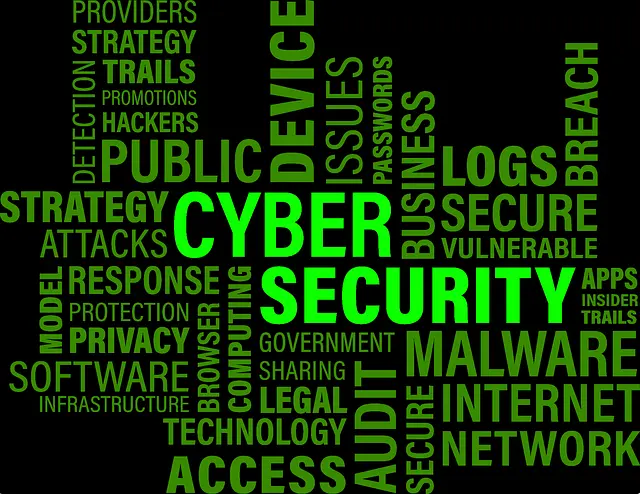When you hear the word “cybersecurity,” what image comes to mind? Is it a hooded figure, hunched over a computer screen?
Although there may well be some who wear hoodies, cybercriminals today aren’t reserved for skulking rogues. Cybercrime is a massive business that’s expected to be valued at $6 trillion annually by the year 2021. In fact, it’s even more profitable than the global trade of all major illegal drugs combined.
With monthly, and even weekly, news of data breaches and hacks, it’s important to remember staying safe on the internet is everyone’s responsibility. However, if you don’t have a basic knowledge of cybersecurity, the impact of cybercrime, and how to practice safe habits online, the concept of cybersecurity can seem a bit intimidating.
As David Herman, President of Raffetto Herman Strategic Communications says, “What’s not being said about cybersecurity is how much of a difference people can make just by taking some simple steps.” This article discusses cybersecurity basics, some of today’s greatest cyber threats, and how you can defend yourself and your organization online.
What Is Cybersecurity All About?
Cybersecurity encompasses all the processes and methods that protect computer devices, networks, data, and information against attack, theft, misuse, or disruption. These attacks are often aimed at tampering with sensitive information, extorting money from users, or interrupting normal business processes. Cybersecurity often focuses on protecting organizations’ internal data and infrastructure, as well as managing access controls, passwords, firewalls, scans, and antivirus software.
Why Is Cybersecurity Important?
In today’s digital age, nearly everything we do is conducted online, from banking to maintaining friendships. The integration of digital and information technology is increasing at home, work, and even in public infrastructure. Though cybersecurity concerns were once limited to protecting traditional desktop computers and servers, cybersecurity must now also focus on the mobile devices we use on a daily basis.
The rise in the widespread use of technological devices, such as smartphones, laptops, and tablets, brought a rise in cybercrime with it. One particularly chilling statistic from the FBI says there are now more than 4,000 hacks every single day using ransomware alone. It’s extremely misguided for anyone to think they can’t be affected by cybercrime. Those who are impacted by a cyberattack could find themselves subjected to financial and identity theft or reputation ruin
Individuals and businesses of all sizes should be hyper-focused on the detrimental effects of cybercrime and, in turn, heighten their awareness of how to improve their cybersecurity efforts.
How Are Systems Attacked?
There is a myriad of ways in which cybercriminals can attack individuals or organizations from the outside. Here are a few of the most popular and what they mean:
Vulnerabilities: A vulnerability is a weakness that exists in the design of a database, its implementation, or the installation of equipment. These weaknesses become exploits in the hands of attackers who leverage vulnerabilities for malicious purposes. Companies who are aware of these vulnerabilities and don’t properly repair them through a practice known as patching, are more susceptible to cyber risk.
Backdoors: A backdoor in software or a computer system is generally an undocumented portal that allows an administrator to enter the system to troubleshoot or perform upkeep. It offers a way into the system that circumvents the authorization process. However, cybercriminals can also install their own backdoor on a system, which allows them to come and go as they please.
Phishing: Phishing is one of the most common ways to target organizations; in fact, more than 76% of organizations reported a phishing attack in 2017. Phishing is an attempt to acquire sensitive information by pretending to represent a legitimate organization or person, often someone of authority. Cybercriminals who use phishing emails send them to a number of people in the hope that some will bite.
Ransomware: Ransomware is a popular form of malicious software that locks the owner out of their own data system or device. In many cases, the victims must pay the cybercriminal within a set amount of time or risk losing access forever. The data becomes encrypted, restricting the owner from accessing their data.
Social Engineering: Social engineering is a sophisticated form of phishing wherein attackers use web pages, email, and phone calls to pose as authority figures or friendly agents to acquire sensitive personal or company data. For example, a cybercriminal might send an email under the name of a CFO asking for HR records or a message requesting money from a “grandchild.”
Practical Cybersecurity Tips
Although the risks of unsecured devices and networks are daunting, implementing strong security practices doesn’t have to be. Here are a few ways to easily implement better cybersecurity measures:
Regularly Install Patches: Organizations that fail to regularly deploy patches leave themselves vulnerable to cyber attacks. Many companies take much longer than best practices suggest to repair known vulnerabilities, which, in the meantime, grants cybercriminals easy access to critical business information. However, emerging tools like Oracle’s autonomous database, can automate software patching to make the process easier to manage.
Be Wary of Unknown Email Addresses: If you receive an email from an unfamiliar address or an address outside your organization, don’t provide personal information before confirming its validity. At the same time, it’s not always safe to send confidential information over email or text at all. To ensure the message is a legitimate request, communicate with the person face-to-face to provide any sensitive details.
Practice Password Discipline: Many people fall into the habit of using the same easy-to-remember password for multiple online accounts. However, the most secure passwords are long and complex. If you have trouble remembering or managing a long list of passwords, try using a password manager to ensure your security.
Consider Managed Services: Rather than maintaining your own servers, consider cloud-based platforms, storage options, file-sharing, and cyber threat protection. Cloud-based protection systems offer around-the-cloud monitoring for your network infrastructure, and regularly investigate new threats and implement solutions.
Cybersecurity is a growing concern for many individuals and organizations, but it doesn’t have to be a complex topic. Making a few simple strides to better your cybersecurity measures not only minimizes the risk of cyberattacks, but also ensures you’re continuously operating safely online.













